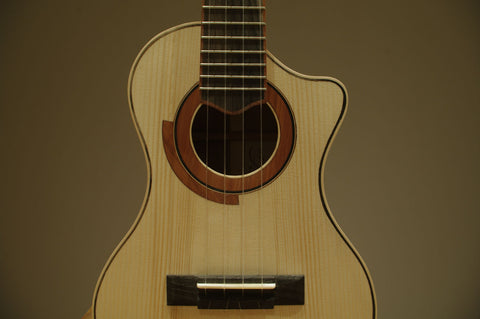Dalarnas Ukulele
Sailing wood
Bergshamra
In 1869 Arvid Lundberg was born. Living in Bergshamra, 6 kilometers north of Stockholm, he was a partner in a company that, besides exploring a farm, transported wood to Stockholm. This wood was transported in boats that sailed through the Baltic to the Capital of Sweden. Thirty four years later, in 1903, Carl Lunberg was born, son of Arvid. Because there was no electrical warming system on that time, he sailed also to Stockholm with woods that were used to keep the city warm. Around 1930 the company disappeared and the boats were kept in the arbor. Some were adapted with motor and kept sailing but their faith was established and some years later they were sunk in the Baltic, not far from the shore.
Sounding wood
Portugal
In August 2016, 147 years after Arvid Lundberg was born, I moved from Portugal to Sweden. I kept working as a guitar builder, so I moved with all my woods, tools and machines to the south of Dalarna. Some months later I met Kjell Lundberg, a nice guy living near Ludvika. We shared the same interest for wood, wood work and music, so it was easy to become close friends. Kjell was born in 1946. He is son of Carl, he lived until the adult age in Bergshamra and sailed in the same boat as his father and grandfather. Around 1970, 13 years before I was born and some years after the boats were sunk, Kjell decided to recover some pieces of their wood. They were sunk near the shore. These boats were made of oak, who planted this oaks? Where? Who chop them, and who built the boats? It is an incredible journey that our minds can do, but time is capable of many things, and he’s mainly strong on the art of forgetfulness. But, at least, oak is stronger than our memories so he resisted until today. Kjell does still have some pieces of it, it is dark, and probably there’s still more somewhere around Bergshamra shores.
Teaching wood
Garpenberg
Some years later, Kjell moved to Garpenberg, in Dalarna. There, with his wife, he taught woodworking on the local school. Their sons were born there and they lived there for 40 years. Of course, Kjell kept collecting woods and making beautiful things with them.
Traveling people
Hawaii
On 1879, ten years after Arvid was born, “the ship Ravenscray reached Honolulu, transporting 120 emigrants from Madeira destined to work in the cultivation of sugar canes [...] amongst them were two braguinha players – João Fernandes and José Luis Correia and three builders of the instrument – Manuel Nunes, Augusto Dias and José do Espirito Santo” (L. O. João, p.94, 2011). Honolulu is the capital of the state of Hawaii, and the braguinha is a Portuguese traditional instrument that has the same general characteristics has the Ukulele. Just like the cavaquinho from Brazil or Cape Verde, the ukulele also results from the Portuguese diaspora that transported part of his culture to diferent parts of the world.
Back home
New Zealand
Meanwhile, somewhere in New Zealand, Sara Lundberg, daughter of Kjell, met the ukulele. Started to play it and bought one. Of course, since the ukulele is one of the most played instruments on earth, it is also one of the most built instruments on earth and, of course once again, it is made in every shapes, colors and sizes. It is also one of the most industrialised instruments, so much that you can find an ukulele for 20 or 30 euros. Because of that, one day, in August 2017, one hundred and thirty eight years after the Ravenscray reaches Honolulu, Kjell came to me with an unglued bridge on a cheap yellow ukulele. – “What’s this Kjell?” I asked. “Oh, it’s my daughters’ ukulele; she bought it in New Zealand...” It was sad...
The Ukulele
Larsbo

This is how the oak of the boats that Sara’s grand grandfather sailed met the apple tree wood and birch wood that Kjell collected in Garpenberg. This is how a Portuguese built an instrument that another Portuguese took to Hawaii with woods that grown in Sweden where Sara lived before going to New Zealand to meet the ukulele that a Portuguese took Hawaii. This is this ukulele, the whole world in it.

This is what I look for when building instruments. Of course I don’t know all the stories of all the woods I use in my instruments, but at least I know where they come from, where they were chopped and always look to understand their age, context and history. That’s one of the reasons why I do not use exotic woods, because I feel far away from them, from their history and from the ones who’ve been involved on their plantation, grown and chop, far from that nature. Not only that, also for environmental causes and obvious humanitarian causes. Being and acting locally brings proximity, gives the chance to create bounds with people and nature and allows us to be part of something simple that time could, and will, make disappear.

